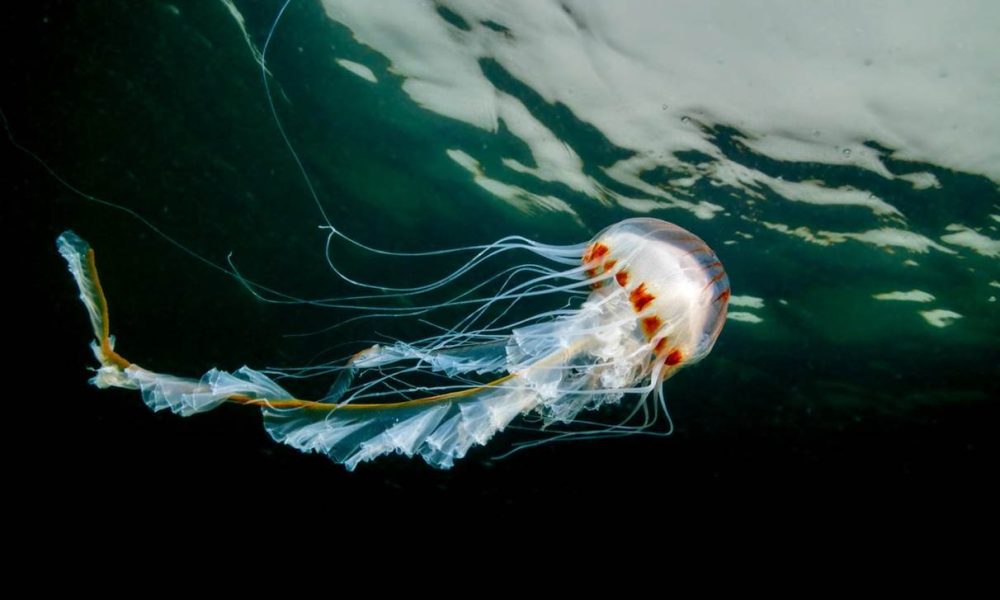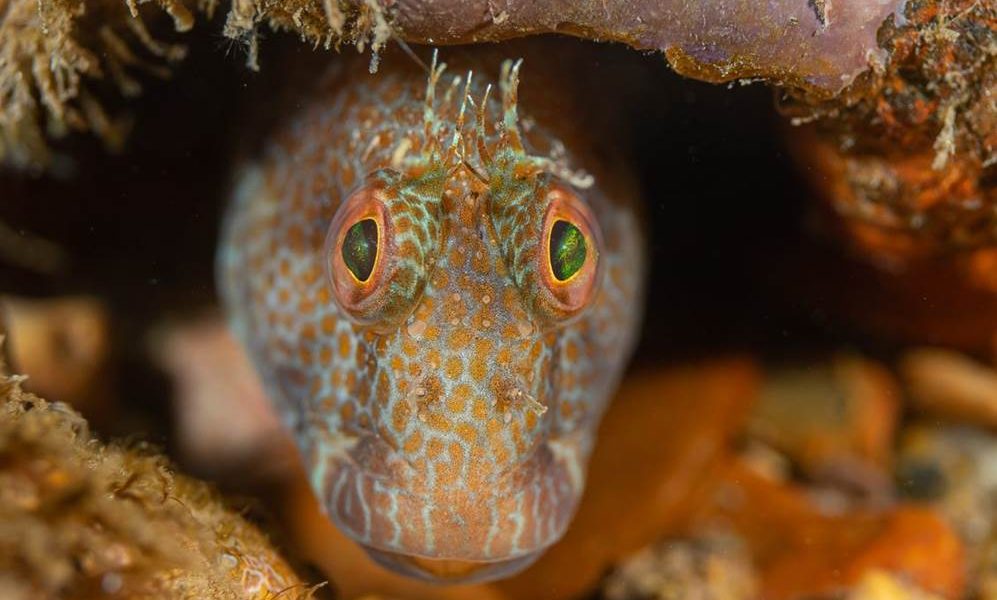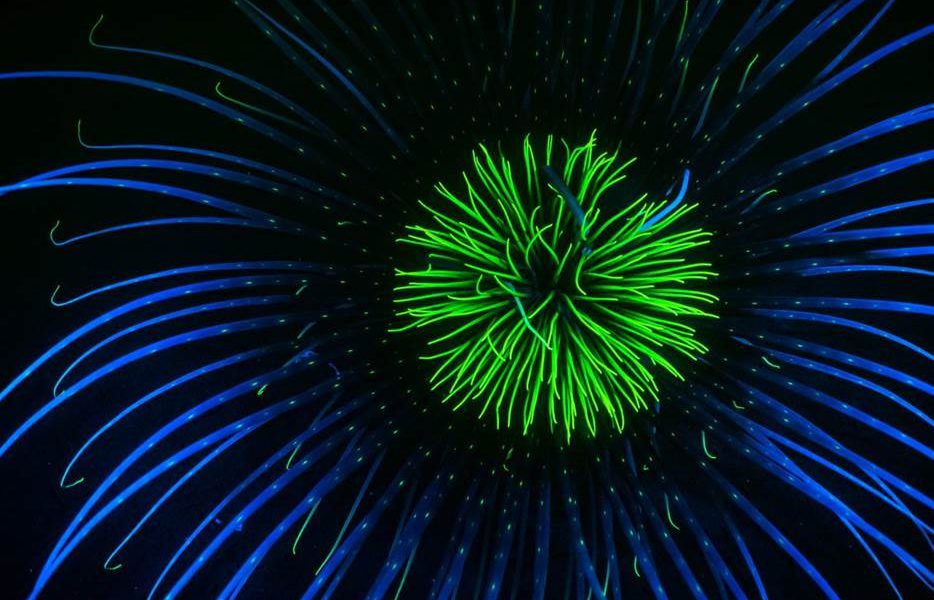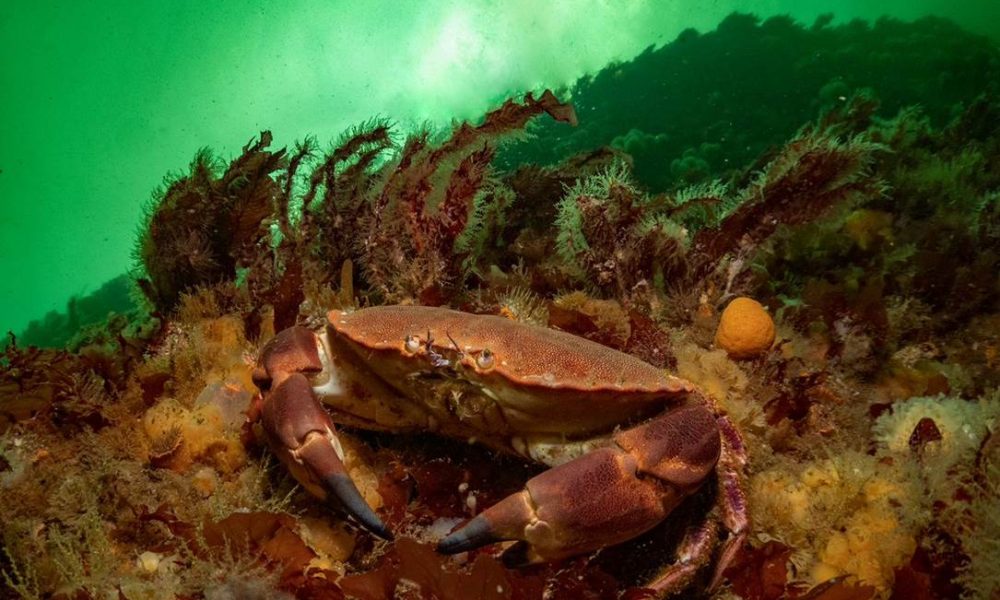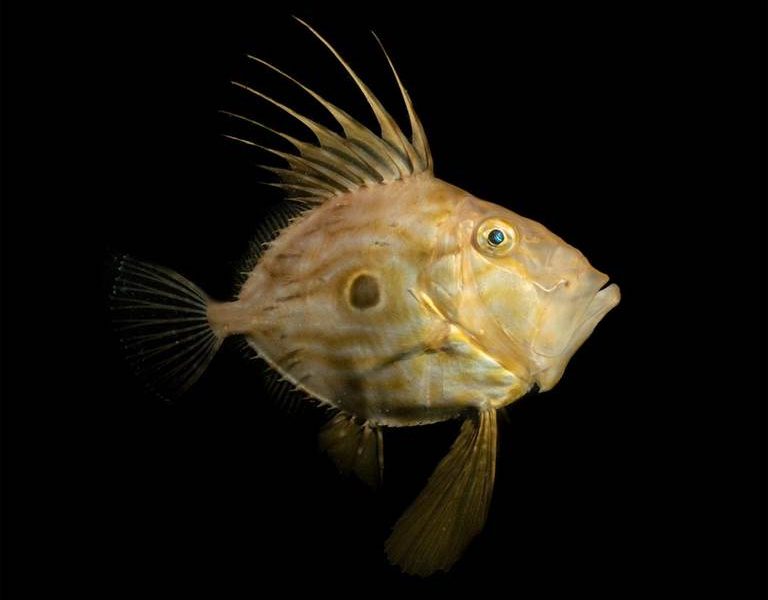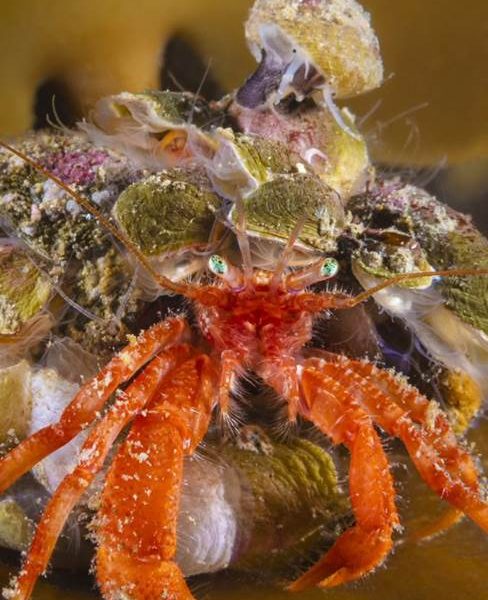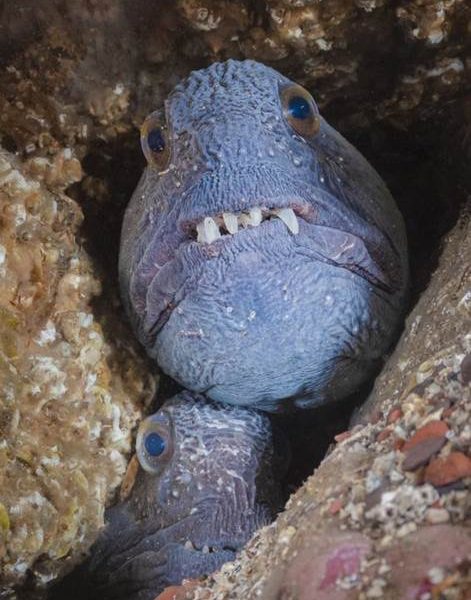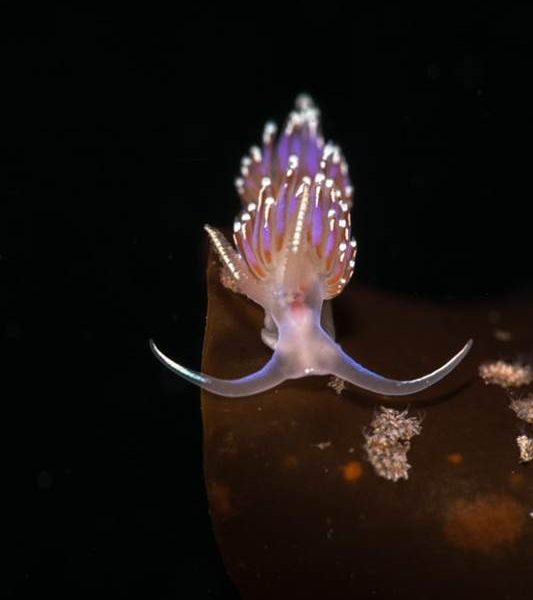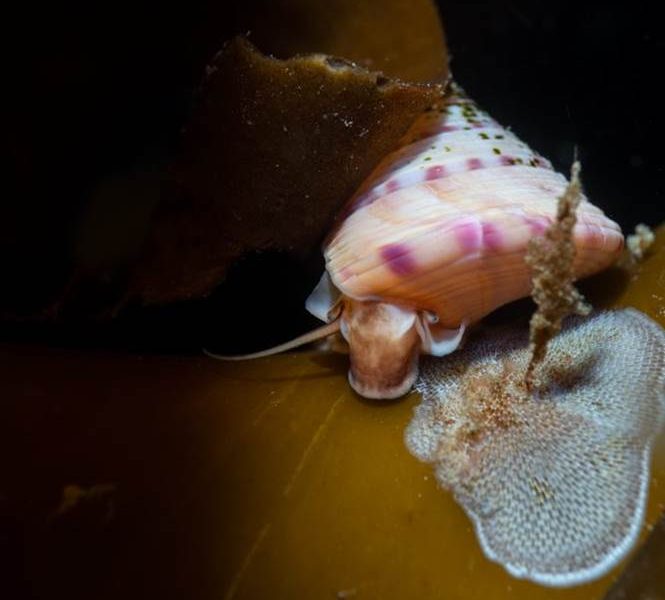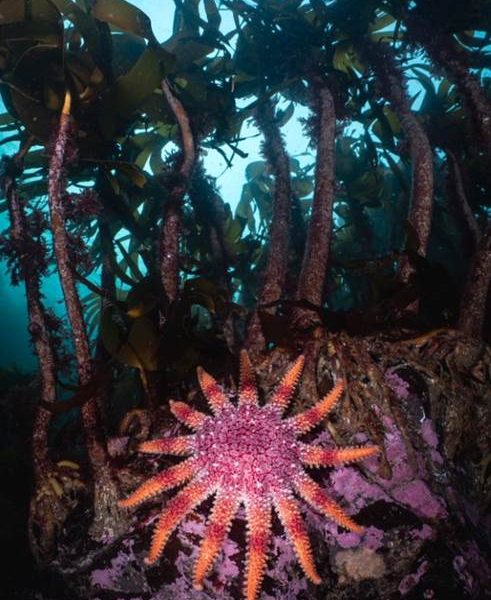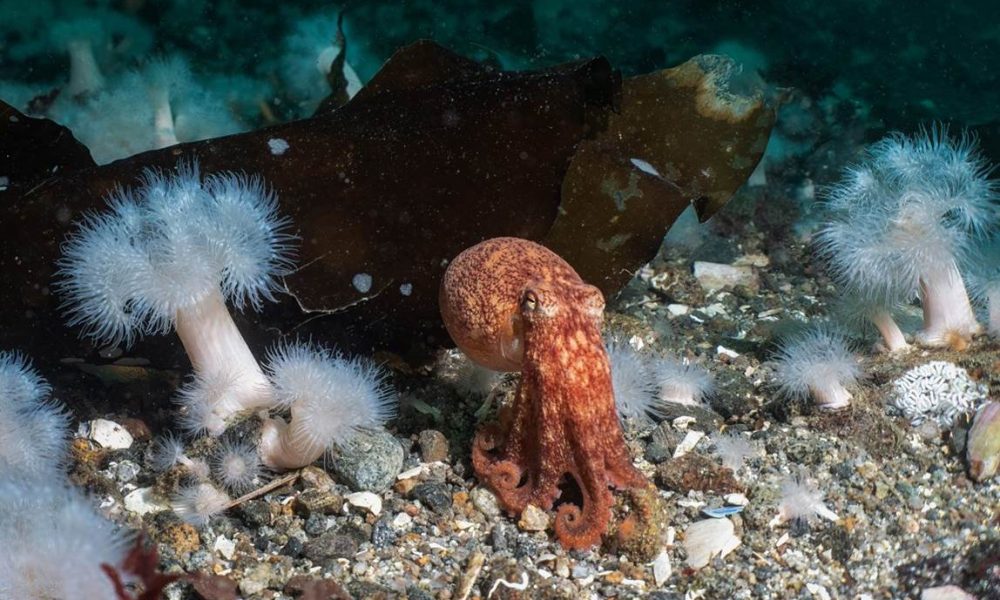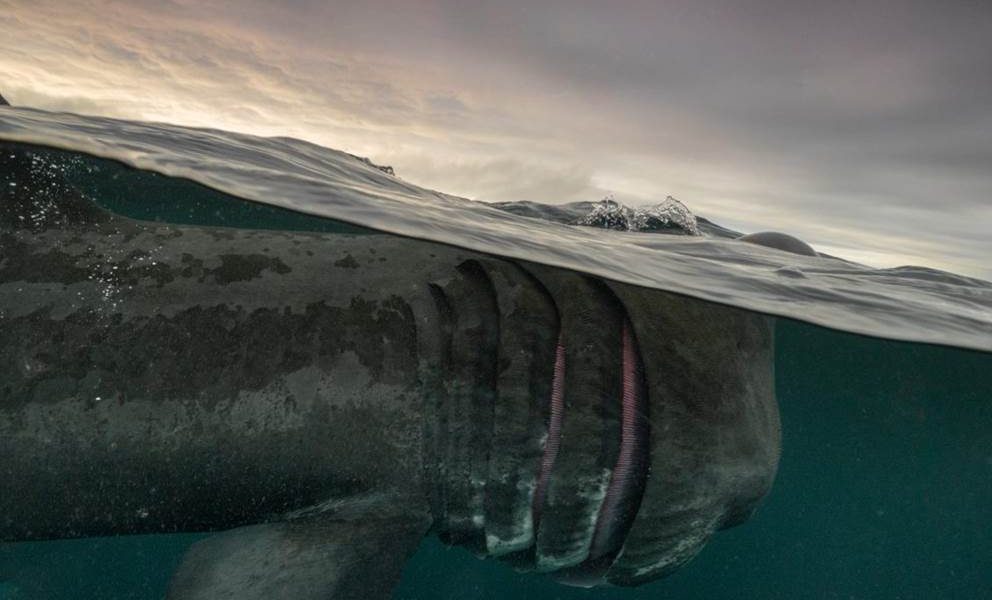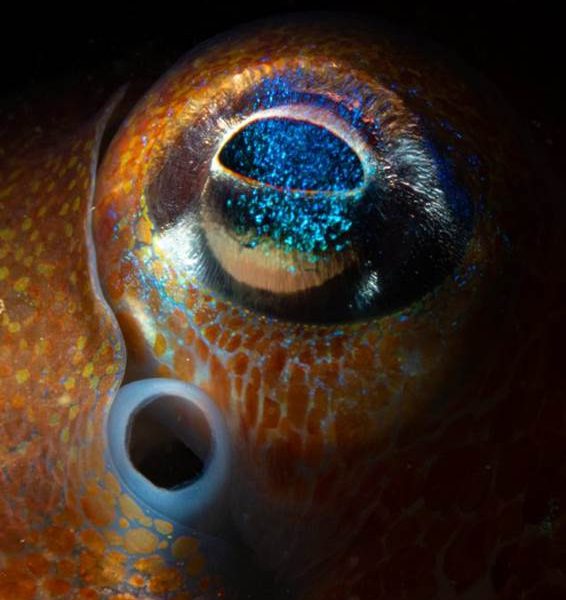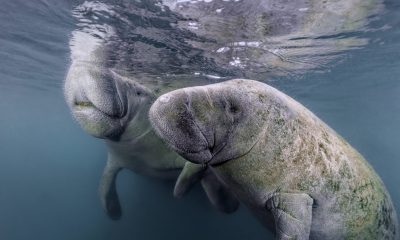Marine Life & Conservation Blogs
World Wildlife Day: incredible UK sea life in pictures
 Today is World Wildlife Day. The Marine Conservation Society have compiled incredible underwater photography from UK seas, showcasing how special our wildlife is.
Today is World Wildlife Day. The Marine Conservation Society have compiled incredible underwater photography from UK seas, showcasing how special our wildlife is.
Seasoned underwater photographers share how they captured amazing scenes of UK wildlife; get inspired to dive in yourself. While the images below show the colourful and curious world under the surface of the UK’s seas, these fragile ecosystems are in urgent need of protection and restoration. Without a healthy ocean, we cannot have a healthy planet.
- Anglerfish, Lophius Piscatorius, Chesil Cove, Dorset by Jon Bunker – “Among the most beautiful of our ground-dwelling fishes, the angler fish’s mottled brown tones and leafy protrusions of skin make it almost undistinguishable from the rocky, weed strewn ground that divers often encounter them in. Broad circular pectoral fins seem to grip the seabed like clasping hands on either side of the massive, dustbin-lid head. Ahead of a decreasing series of weed-like dorsal spines, the anglerfish wafts its distinctive lure or ‘illicium’ to entice unwary prey into its cavernous mouth.”
- Basking Shark, Isle of Coll by Mark Kirkland – “Through late summer the basking shark passes though the Isles of Coll and Tiree in huge numbers on its migratory journey north. Despite being the second largest fish in the sea (up to nine meters long) and a close relative to the great white shark, it’s completely harmless, with a preference for microscopic plankton as it’s food. This split shot was taken on a glorious evening’s snorkel with three large individuals.”
- John Dory, Dorset by Georgie Bull – “I have always had a soft spot for John Dory. When I first started diving in Dorset, we were gifted with many summer nights full of John Dory. I hadn’t seen one for years, but this summer they returned in good number, and I spent a good 10 minutes with this individual who was very keen to check themselves out in the reflection of my dome lens.”
- Firework anemone (Pachycerianthus multiplicatus), Inverary, Loch Fyne by Dan Bolt – “As the UK’s biggest anemone, the Firework anemone can have a stalk and tentacles of up to 30cm long. Usually restricted to deeper waters, in many western Sea Lochs in Scotland they are accessible to sport divers. These beautiful creatures also have a party trick: under UV light they fluoresce and emit blue and green light and display patterns not seen under daylight.”
- Edible crab, Ar. Abbs, Berwickshire marine reserve by Georgie Bull – “Over the summer I visited St. Abbs and was blown away by how many crabs and lobsters there were. The Berwickshire Marine Reserve is a very special place to dive because it is a voluntary no-take zone. Many of the marine animals here have no need to fear divers and exist in higher numbers than outside of the reserve.”
- Variable blenny, Babbacombe, south Devon by Dan Bolt – “The variable blenny is a relative newcomer to UK waters, arriving from the Mediterranean as a summer visitor some years ago, but is now firmly established in Babbacombe all year round. As their name suggests they are variable in colour, not only between male and female, but also when either mating or looking after a clutch of delicate eggs for weeks at a time.”
- Compass jellyfish, Falmouth, Cornwall by Martin Stevens – “The jellyfish is a compass jellyfish, smaller individual from Falmouth, Cornwall in springtime. A nice encounter with a great species, locally. Taken under overcast skies, moody weather, one of the first compass jellyfish of the year.”
- Curled octopus, Toft pier, Shetland Islands by Billy Arthur – “Instantly a great dive when an octopus encounter is involved! Being quite sheltered and having lots of prey available for them, this site is a hotspot for curled octopus. It was already watching me when I finally noticed its presence, which is nearly always the case with these masters of camouflage. The plumose anemones which carpet the seabed in patches make it a very special place.”
- Painted top-shell, Boddam, Shetland Islands by Billy Arthur – “One of the prettiest molluscs we find up here on the Shetland islands. This one looks to be feeding on a sea-mat which is a type of bryozoan which encrusts kelp fronds. Their stunning shells, which swash up on our beaches, are a prized find for beach combers, but they are much more stunning when alive. If you look closely, you can see its eye poking out from under the shell.”
- Facelina auriculata, Lunna, Shetland Islands by Billy Arthur – “An absolute stunner of a nudibranch (sea slug)! Not as common as some of the other species we find here in Shetland, which makes them even more special. Caught by the sun’s rays they almost seem to sparkle. It’s amazing that such tiny, delicate creatures can survive in the wild seas around Shetlands coastline. Our kelp forests around Scotland are rich with life, the biodiversity in these forests is breath-taking and we need to protect them!”
- Pair of wolf fish, Berwickshire marine reserve by Kirsty Andrews – “The Berwickshire marine reserve on the Scottish borders is the most reliable spot for UK divers to see charismatic wolf fish in their rocky lairs. They usually live singly but on one September trip, I spotted five separate pairs huddled together in different rocky hollows. Clearly, love is in the air for wolffish in the Autumn.”
- Hermit crab and other molluscs on kelp, Shetland by Kirsty Andrews – “The closer you look, the more you see. I was drawn to this tiny but colourful hermit crab on a piece of kelp in the shallows in Shetland, but I didn’t appreciate until I looked closer that its shell was in turn covered in life, such as lampshells, pink encrusting algae and at the very top, a topshell. Quite the vibrant community.”
- Bobtail Squid, Loch Long by Mark Kirkland – “As winter creeps in, the tiny Bobtail Squid rises from the depths of the sealochs to breed. Through September and October, they can be found in depths as shallow as ten metres. Often no larger than a golf ball, a macro lens is preferable to get the glorious and colourful details. This shot shows an eye and siphon.”
- Common Sunstar, Levenwick, Shetland Islands by Billy Arthur – “Typical rocky Shetland reef capped with a beautiful forest of kelp. This large common sunstar seemed to be making its way up into the kelp forest, likely in search of food. A beautiful starfish but also a voracious predator and scavenger. Once their prey has been caught by one of its many arms, they extrude their stomach out of their mouth and partially digest the meal, a gruesome end.”
To learn more about the Marine Conservation Society’s work, and how to get involved with the Seasearch project, please visit the charity’s website: Marine Conservation Society | Home (mcsuk.org)
Blogs
Heading out on the water this Summer? Watch for manatees
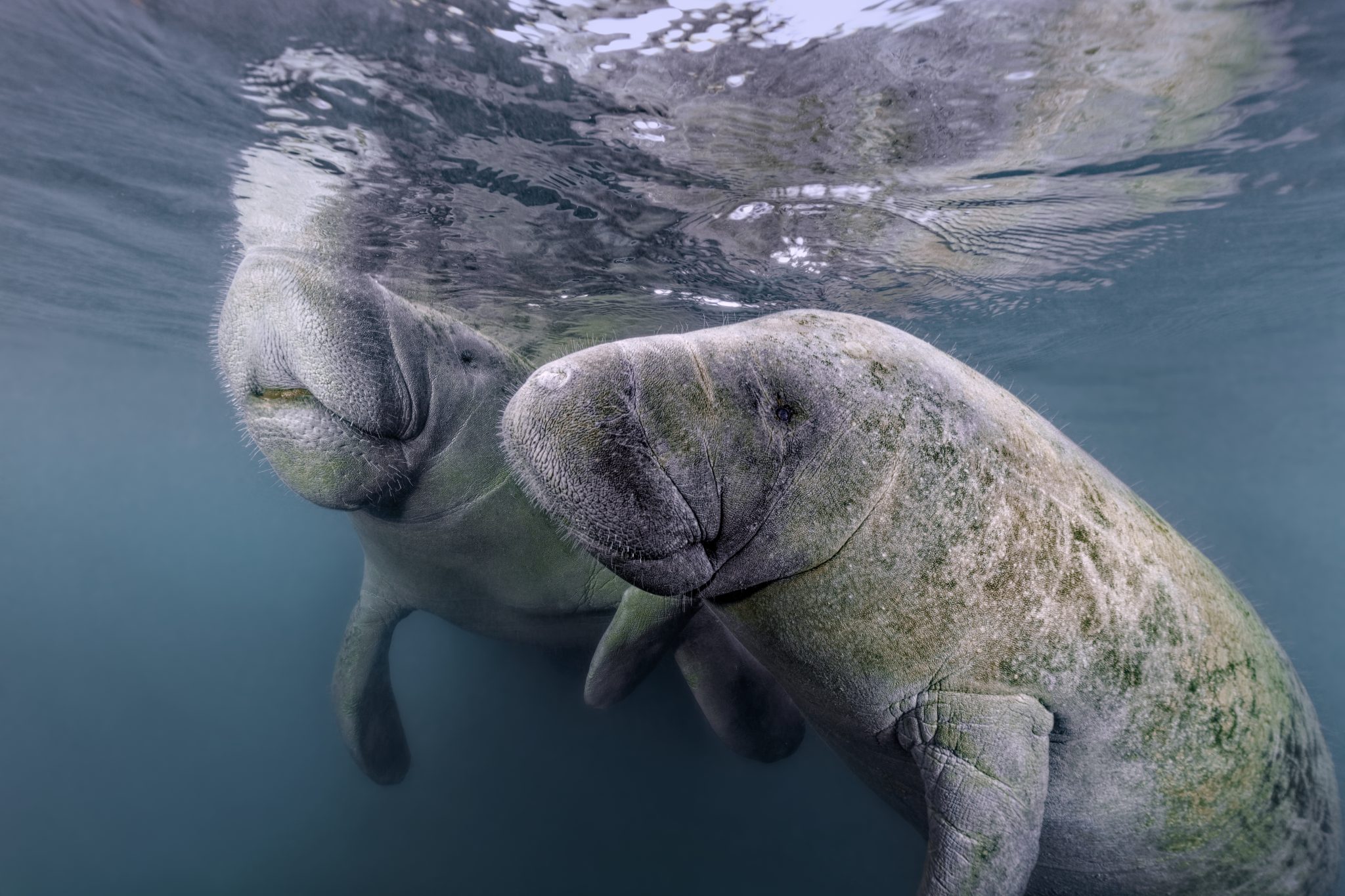
As National Safe Boating Week approaches, Save the Manatee® Club is urging boaters, and anyone that enjoys Florida’s waterways, to respect and protect the defenseless manatees that inhabit our shared waterways. From May 18 to 24, leading up to Memorial Day Weekend, the campaign aims to raise awareness about recreational boating safety and the importance of safeguarding imperiled manatees during the summer boating season. This week also emphasizes the importance of encouraging boaters to enroll in a boating safety course.
Manatees are semi-migratory marine mammals that are commonly found in shallow estuaries, bays, rivers, canals, and coastal areas throughout Florida and neighboring states. With some manatees venturing as far west as Texas and as far north as Massachusetts, collisions between these gentle giants and watercraft have become distressingly frequent. Boat propellers and high-speed collisions pose significant threats to manatees, often resulting in severe injuries or even death.
Save the Manatee Club is calling on all water enthusiasts to follow essential manatee safety tips to ensure the well-being of the imperiled manatee:
- Obey Speed Zone Signs: Familiarize yourself with and adhere to posted speed limits to prevent collisions with manatees.
- Reduce Glare with Polarized Sunglasses: Wear polarized sunglasses to enhance visibility and spot manatees below the water’s surface.
- Recognize Manatee Signs: Learn to identify signs of manatees in the area, such as swirls or flat spots on the water caused by their movements.
- Respect Manatee Sanctuaries: Keep a safe distance from posted manatee sanctuaries and avoid pursuing or harassing these marine mammals, as it is illegal and can disrupt their natural behaviors.
- Report Distressed Manatees: In Florida, promptly report distressed, injured, tagged, or orphaned manatees to the Florida Fish and Wildlife Conservation Commission (FWC) at 1-888-404-FWCC (3922). Outside of Florida, report sightings to the appropriate state agency or rescue organization. A list of agencies to contact is available at savethemanatee.org/report.
- Protect Seagrass Beds: Avoid boating over seagrass beds and shallow areas where manatees may be feeding. Stick to deep water channels while remaining vigilant, as manatees also utilize these channels during their travels.
- Dispose of Fishing Line Responsibly: Anglers should properly dispose of or recycle used fishing line to prevent entanglement hazards for manatees.
“Each year, National Safe Boating Week provides an excellent reminder for all of us to be aware that we share our waterways with vulnerable manatees,” emphasized Patrick Rose, Aquatic Biologist and Executive Director of Save the Manatee Club. “With the recent Unusual Mortality Event on Florida’s East Coast claiming an alarming number of manatees’ lives, it is more crucial than ever to prevent preventable deaths caused by watercraft collisions. By following manatee-safe boating guidelines, such as obeying speed zones and remaining vigilant for manatees, everyone on the water can contribute to the protection of these gentle giants.”
Save the Manatee Club offers a range of free materials to help safeguard manatees and raise awareness about manatee-safe boating practices. Shoreline property owners and park or marina managers can order aluminum dock signs to alert others about the presence of manatees in their areas. Boaters and paddlers can request packets containing a safety tips card, a waterproof boat banner, and a decal to display on their vessels, providing the number to report manatees in distress. To view and request these materials, visit savethemanatee.org/resources. Save the Manatee Club will also be hosting a live webinar for National Safe Boating Week on Tuesday, May 21st at 6pm EST. To register, visit savethemanatee.org/register.
Marine Life & Conservation Blogs
Book Review: Shells of the World

Shells of the World: A Natural History by M.G. Harasewych
Shells of the world is a guide to the world of marine, shelled molluscs. And what a varied and interesting world it is. Some of my favourite things to find on a dive are detailed in this book, including disco clams (or Electric File Clams as they are correctly names), the cephalopods, giant clams and sea hares. There are also many on my wish list, top of which is the Nautilus.
Each chapter provides a detailed description of the species, along with beautiful images. You can dive deeper and discover where they live, both with global distribution and the habitat they prefer. Learn about their diet, reproduction and diversity.
Having dipped in and out of this lovely book over the past few weeks, it has inspired me to learn more about this group of animals that we see on most divers, wherever we are in the world. Some of the shells are incredibly intricate and beautiful. I have always agreed with never collecting, or touching, marine life. The description of a certain set of cone shells should be a warning to those that are happy to pick up marine life! One of the cone shells has a local name called the cigarette snail. Why? Because once the venom is in your system from this animal, you only have time to smoke one cigarette before the affects of the venom are fatal!
What the publisher says:
Mollusks are invertebrate animals with a remarkable natural history and a rich fossil record, and their shells are prized for their breathtaking variety and exquisite beauty. Shells of the World provides a wide-ranging look at the incredible diversity of marine mollusks. An informative introduction outlines the lineages covered, followed by a directory section, split into classes, that profiles a broad selection of different taxa to give a sense of their sheer numbers and variety.
- Features hundreds of beautiful color photos, depicting both the live animals and their shells
- Discusses mollusk evolution, anatomy, life cycles, behavior, and ecology
- Describes unique characteristics, distribution, habitat, and size
- Provides valuable insights into the conservation of the world’s marine mollusks
- Ideal for malacologists and shell collectors everywhere
About the Author:
M. G. Harasewych is research zoologist emeritus and former curator in the Department of Invertebrate Zoology at the Smithsonian Institution’s National Museum of Natural History. A fellow of the American Association for the Advancement of Science, he is the author (with Fabio Moretzsohn) of The Book of Shells: A Life-Size Guide to Identifying and Classifying Six Hundred Seashells.
Book Details
Publisher: Princeton University Press
Hardcover
Price: £25
ISBN: 9780691248271
Published: 9th April, 2024
-

 Marine Life & Conservation Blogs3 months ago
Marine Life & Conservation Blogs3 months agoCreature Feature: Swell Sharks
-

 Gear Reviews4 weeks ago
Gear Reviews4 weeks agoGEAR REVIEW – Revolutionising Diving Comfort: The Sharkskin T2 Chillproof Suit
-

 Blogs2 months ago
Blogs2 months agoMurex Resorts: Passport to Paradise!
-

 Blogs3 months ago
Blogs3 months agoDiver Discovering Whale Skeletons Beneath Ice Judged World’s Best Underwater Photograph
-

 News3 months ago
News3 months agoPADI Teams Up with Wellness Brand Neuro to Drive Ocean Change and Create a Blue State of Mind
-

 Gear Reviews3 months ago
Gear Reviews3 months agoGear Review: Oceanic+ Dive Housing for iPhone
-

 Blogs2 months ago
Blogs2 months agoSeagrass Awareness Month brings critical food source for Manatees to centre stage
-

 Marine Life & Conservation2 months ago
Marine Life & Conservation2 months agoSave the Manatee Club launches brand new webcams at Silver Springs State Park, Florida
















